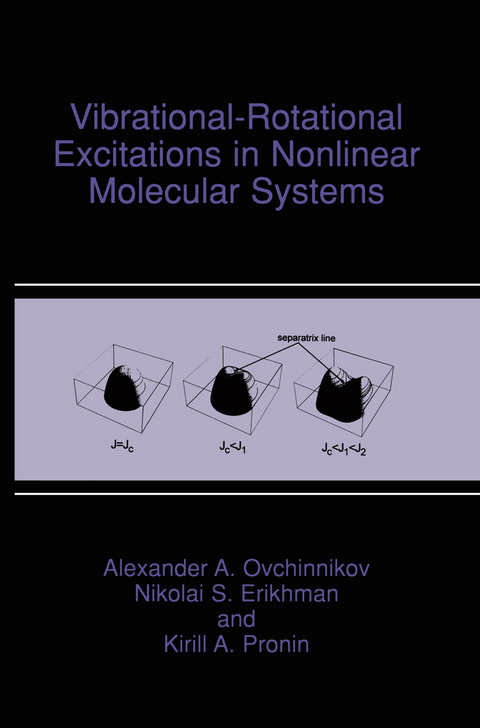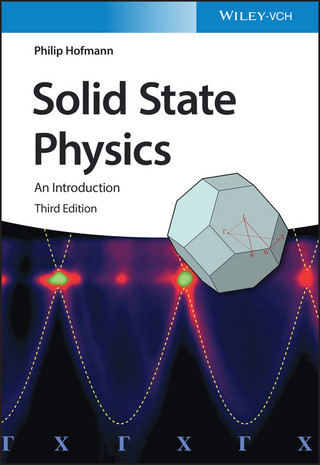
Vibrational-Rotational Excitations in Nonlinear Molecular Systems
Kluwer Academic/Plenum Publishers (Verlag)
978-0-306-46611-3 (ISBN)
"If there would be no God ~ then what a staff-captain am I?" ~ said one of the characters in a novel by Dostoevskii. In a similar way we can exclaim: "If there would be no nonlinearity ~ than what physics would that be'?". Really, the most interesting and exciting effects are described by non linear equations, and vanish in the linear approximation. For example, the general theory of relativity by A.Einstein comes to mind first - one of the most beautiful physical theories, which is in fact essentially nonlinear. Next, the phase transitions crystal ~ liquid and liquid ~ gas are due to the anhar monicity of inter-particle interactions, to dissociation and infinite motion. Similarly, transitions into the superconducting state or the superftuid would be impossible with purely harmonic interaction potentials. Another bril liant achievement in nonlinear physics was the construction of a laser and the subsequent development of nonlinear optics. The latter describes the in teraction of the matter with light of super-high intensity, when multi-quanta intra-molecular transitions become essential. Last, we should note here the very beautiful mathematical theory ~ the theory of catastrophes. Its subject is the study of invariant general properties of multi-dimensional surfaces in the vicinity of bifurcation points with respect to continuous transformations.
1 Introduction.- 2 Classical theory of nonlinear vibrational systems; local modes.- 2.1 Survey of classical mechanics; introduction to local modes.- 2.2 Method of averaging.- 2.3 Two weakly coupled Morse oscillators: dynamics and local - mode formation.- 2.4 Analysis of phase trajectories with the help of Poincare sections, numerical results.- 3 Coupled nonlinear oscillators: formation and decay of local modes.- 3.1 Two weakly coupled nonlinear oscillators: decay of normal modes.- 3.2 Multi-oscillator systems: local modes’ and normal modes’ representations.- 3.3 Morse oscillators: calculation of resonance linewidths and criteria for the appearance of local modes.- 3.4 Coupled nonlinear oscillators: localized vibrational excitations and their asymptotic stability.- 3.5 Canonical transformation to local - mode representation.- 4 Discrete breathers.- 4.1 Breathers in Hamiltonian lattices.- 4.2 Discrete breathers in one-dimensional chains.- 4.3 Arguments for the existence of discrete breathers: some mathematics.- 4.4 Discrete breathers: numerical experiments.- 4.5 Discrete breathers in lattices with a homogeneous potential.- 4.6 An exactly solvable Hamiltonian lattice.- 5 Quantum theory of vibrational - rotational spectra in XY2 - type molecules.- 5.1 Quantum theory of two Morse oscillators: stretching — vibration spectra in XY2 molecules.- 5.2 Stretching — vibration spectra: nonresonant modes’ effect upon clusterization of levels.- 5.3 Spectrum of stretching vibrations in XY2 molecules: numerical studies.- 6 Quantum Hamiltonians of vibrational — rotational excitations in polyatomic molecules; method of contact transformations.- 6.1 Quantum Hamiltonian of polyatomic molecules.- 6.2 Molecular Hamiltonian in the inner basis representation ’coordinates -angles’.- 6.3 Contact transformation.- 6.4 Vibrational-rotational Hamiltonian for XY2 molecule in the inner basis representation ’coordinates - angles’.- 7 Semiclassical rotational spectra of rigid and semi-rigid molecules; clusterization of levels and internal symmetry.- 7.1 Spectrum of polyatomic molecules: clusterization of rotational levels.- 7.2 Rotational spectrum of rigid and semi-rigid molecules: semi-classical approach.- 7.3 Symmetry - based analysis of rotational clusters.- 7.4 Tunnelling matrix.- 7.5 Violation of permutation symmetry and the super-hyperfine structure.- 8 Interaction of vibrations and rotations; polyads and their spectra.- 8.1 Interaction of local vibration modes and rotation in hydrides.- 8.2 Rotational - vibrational spectrum in the vicinity of bifurcation points.- 8.3 Spectral properties of systems with Fermi resonances.- 9 Intramolecular relaxation of vibrations in the presence of local modes.- 9.1 Localized long - living vibrational states in molecular crystals.- 9.2 Population inversion of localized long - living vibrational states in a cold lattice.- 9.3 Interaction of isolated levels with the continuous spectrum.- 10 IR spectra and intramolecular relaxation.- 10.1 Redistribution of intramolecular energy: influence of multi-mode resonance.- 10.2 Relation between the absorption linewidths, intramolecular vibrations evolution, and unimolecular decay rates.- 10.3 Effect of anharmonicity on IR spectra of polyatomic molecules.- 10.4 Correlation between structure and IR spectra in polyatomic molecules.- 11 Conclusion.
| Erscheint lt. Verlag | 30.11.2001 |
|---|---|
| Zusatzinfo | XIII, 355 p. |
| Verlagsort | New York |
| Sprache | englisch |
| Maße | 155 x 235 mm |
| Themenwelt | Naturwissenschaften ► Physik / Astronomie ► Atom- / Kern- / Molekularphysik |
| ISBN-10 | 0-306-46611-2 / 0306466112 |
| ISBN-13 | 978-0-306-46611-3 / 9780306466113 |
| Zustand | Neuware |
| Haben Sie eine Frage zum Produkt? |
aus dem Bereich


